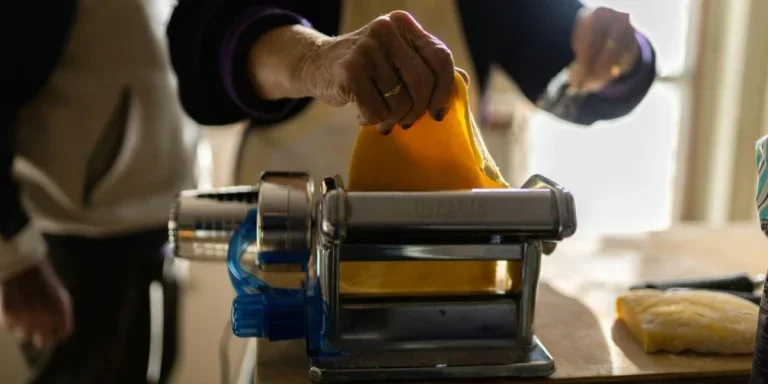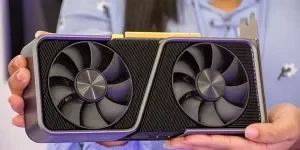A box of pasta in stores may be doing its job, but as more people prefer a fine taste, the demand for pasta makers continues to rise. Pasta lovers or people who prefer freshly made pasta in their kitchens look to invest in pasta makers to do their job without messing with flavor and texture.
This is where sellers can consider taking advantage of the growing demand and shifting preferences. To make the process easy and profitable, let’s examine the basics sellers need to understand to run a profitable pasta machine business.
Table of Contents
Why do pasta machines have business potential?
Market overview & demand
Change in preferences & customization trends
Understanding the different types of pasta makers to sell
Manual pasta makers
Electric pasta makers
Pasta extruders
Stand mixer pasta attachments
What key features sellers should consider when sourcing pasta machines
Adjustable thickness settings
Motor power & speed
Build materials & durability
Ease of assembly & cleaning
Safety features
How to choose pasta machines for different customers
Home cooks
Professional chefs & schools
Restaurants & commercial use
Closing note
Why do pasta machines have business potential?
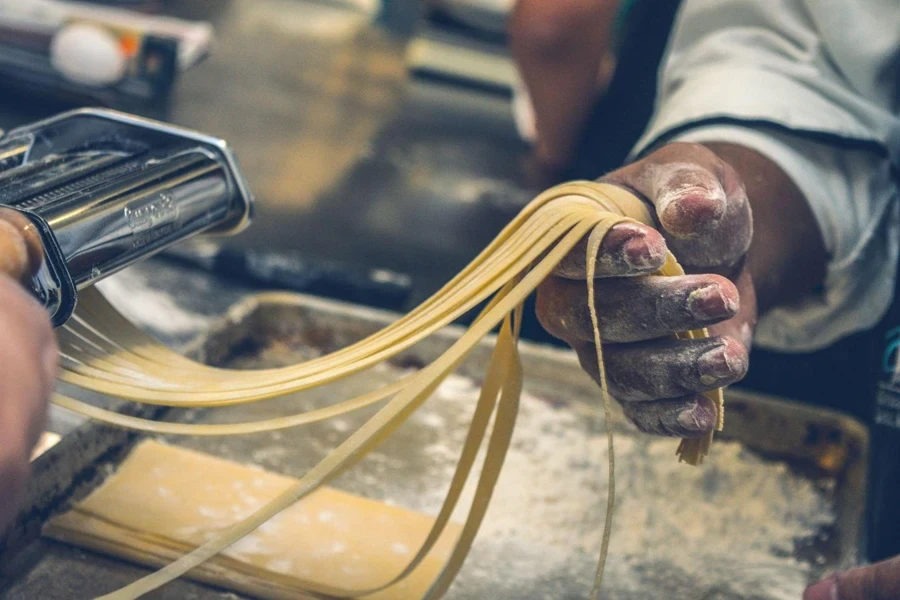
The pasta machine market is expanding as more and more consumers demand high-quality homemade pasta.
Sellers can tap into the business, potentially catering to different segments of customers and following market trends.
Some key factors it includes are:
Market overview & demand
The global pasta machine market was valued at USD 2.1 billion in 2024 and is projected to reach around USD 3.2 billion by 2032. The overall compound annual growth rate (CAGR) recorded for this period is 5.6%.
It also includes trends like home cooking as more consumers shift to making homemade meals, leading to higher demand for appliances like pasta makers.
Change in preferences & customization trends
Another factor is that people are more focused on healthy eating. According to the study, people are reported to strongly wish to eat healthily by changing their daily habits.
This includes investing in strong values and maintaining health in the long term. Moreover, it contributes to the demand for organic, gluten-free, and freshly made preservative-free pasta.
Machines that support low-carb and alternative flour pasta, such as chickpea, almond, and quinoa flour, can help cater to specialized diets.
Understanding the different types of pasta makers to sell
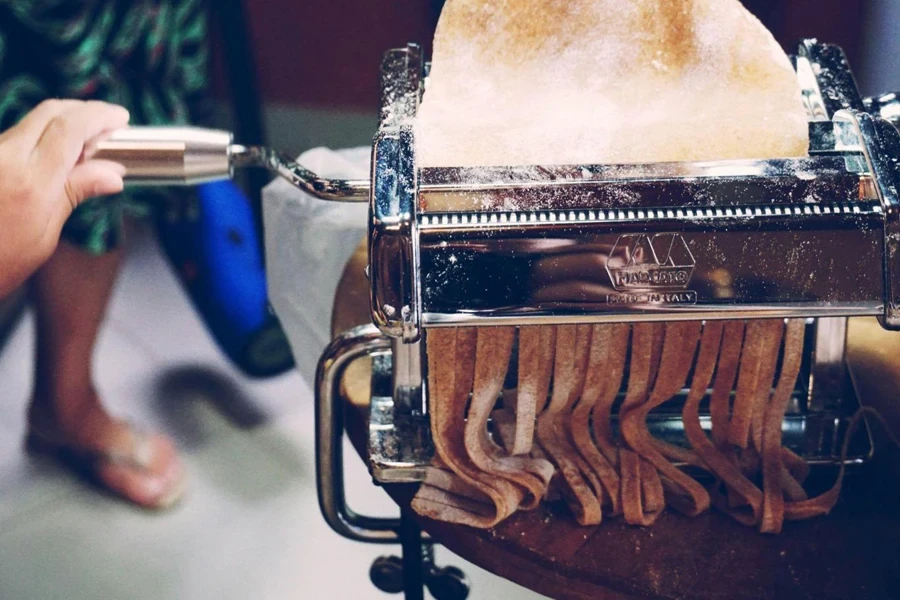
From deciding whether a typical buyer is targeting a pasta maker machine for a restaurant or simple household requirements, it’s crucial to start by exploring what key features and types to consider.
The basic types are manual, semi-automatic, and automatic pasta makers. However, choosing the right type depends on identifying the customer segment and catering to their requirements.
High-end electric pasta makers may also be attracted to automatic pasta machines with advanced features, such as a user-friendly LCD touchscreen and preprogrammed settings.
To understand more types, here is what one needs to know:
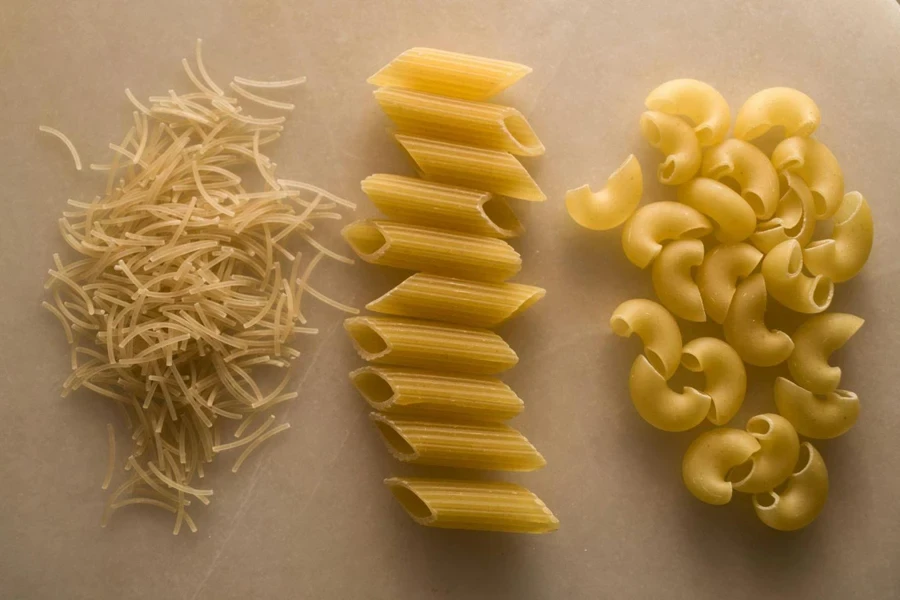
Manual pasta makers
Manual pasta makers are used by traditional home cooks who prefer to have complete control over the pasta-making process.
It has a roller system for using the hand-crank pasta makers. However, the dough needs to be prepared separately before being rolled and cut into the desired shapes, especially for pasta types like lasagna sheets and fettuccine.
Electric pasta makers
Electric pasta makers are suitable for busy home cooks looking for efficiency in their kitchen.
The automated features include rolling, cutting, and mixing processes with the help of automatic dough mixing and extrusion. Sellers can target customers who prefer to make quick and easy pasta without any extra effort.
Pasta extruders
Pasta extruders use the motorized system, which makes it a lot easier, especially if the target customers are looking for commercial pasta machines.
The system pushes the dough through its shaped dies, helping create various styles and shapes in pasta like penne, rigatoni, macaroni, and more.
Also, switching to electric pasta extruders is suitable for bulk production for restaurants, food businesses, and advanced home cooks.
Stand mixer pasta attachments
This type is suitable for home cooks who already own the stand mixers but are looking for a solution to make pasta easily.
A stand mixer pasta attachment connected to stand mixers allows you to use the roll or extrude pasta with its motor. The alternative to owning a complete setup is a more space-saving, easy-to-use, and adorable pasta machine.
What key features sellers should consider when sourcing pasta machines
Adjustable thickness settings
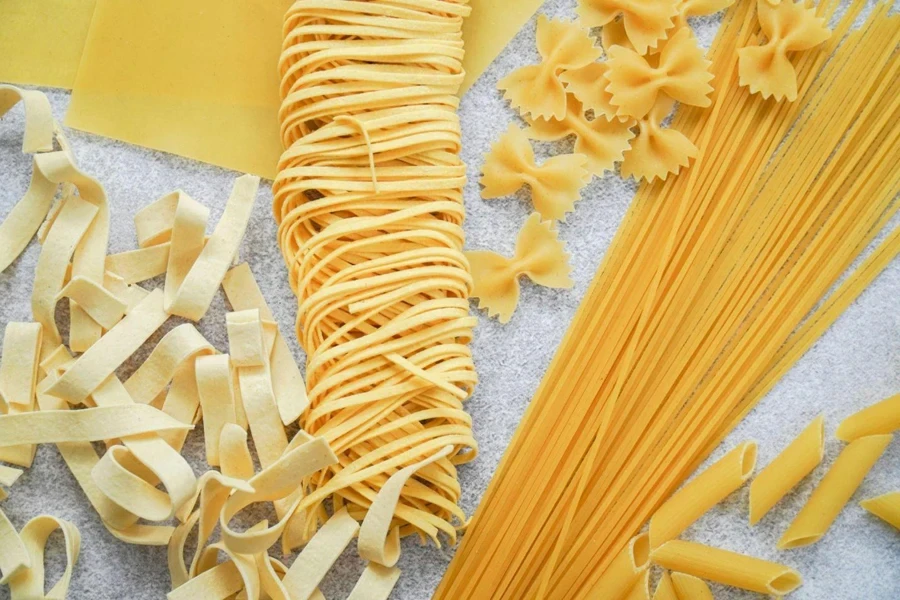
Customers look for flexibility when they invest in pasta makers for kitchens. This includes ease in creating different thicknesses in pasta.
The adjustable thickness setting not only helps achieve the results but also provides versatility for different recipes without compromising the pasta texture. The ideal setting can be at least 5–9 thicker to cater to a larger section of buyers.
Along with thickness, multiple cutting attachments are considered one of the major selling points. The machine can have detachable pasta cutter blades or die attachments, allowing it to produce different types of pasta using just one device.
Motor power & speed
For electric pasta makers, having the motor power and processing speed ensures efficiency for the users. Pasta machines with higher wattage can easily handle larger batches and thicker dough for commercial use.
Build materials & durability
Durability is a key factor, and stainless steel pasta makers are ideally suited to providing greater durability and longevity than plastic pasta machine models.
The stainless steel material is corrosion-resistant, making it easy for home and professional buyers to use. Its heavy-duty construction contributes to its stability, which can be a key selling point.
Ease of assembly & cleaning
While the purpose of owning a pasta machine is to make pasta hassle-free, it also includes a mess-free solution.
For example, a nonstick coating prevents the dough from sticking to the cutters or rollers.
Sellers should also consider storage besides cleaning.
Compact pasta machines with lightweight designs and styles can easily fold up for storage in smaller kitchens. They also come with protective covers or storage bags to protect them from damage.
Safety features
BPA-free materials in pasta machines ensure they are not made using non-toxic materials and have no harmful chemicals that could contaminate the food.
Another key safety feature to look for is overheating protection in pasta machines, especially electric ones. It helps keep the motor and other components from getting damaged, even if the machine is used for extended use.
How to choose pasta machines for different customers
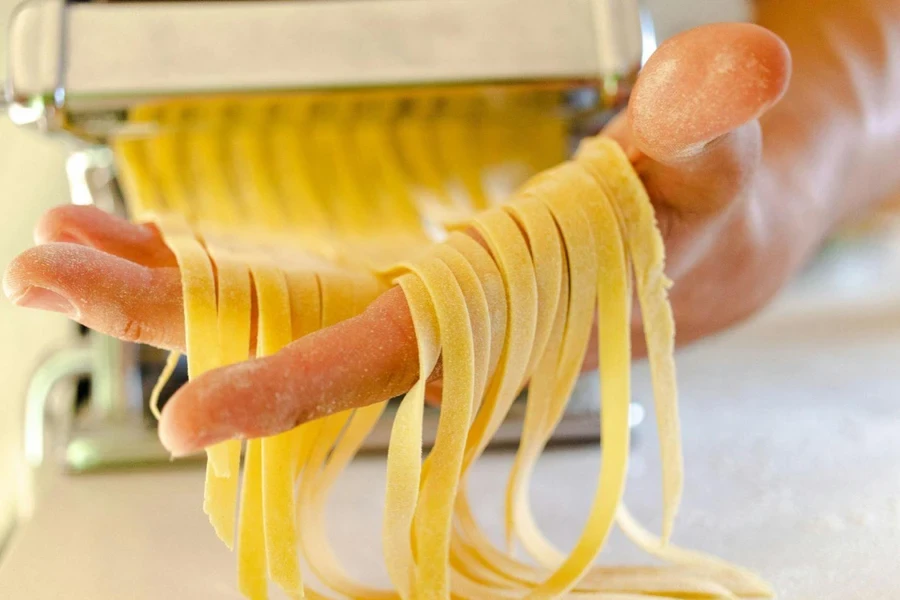
For sellers, choosing the right pasta machine depends on understanding the type of customers they are targeting.
The pasta machine comes with key selling features that can be profitable as sellers diversify the range from home-use models to industrial ones to maximize sales and business potential.
Home cooks
Manual pasta makers or compact electric ones are ideal because they provide ease of use, versatility, and affordability.
Home users prefer these key features, especially families, hobbyist cooks, or home chefs.
When targeting this type of customer, sellers can offer dishwasher safety or ease in the cleaning process, as it saves a lot of time in busy households.
Professional chefs & schools
The ideal choice is a semi-automatic or heavy-duty machine that can handle frequent use and high-volume use.
Moreover, professional chefs, cooking schools, or high-end restaurants look for precision in their pasta machines along with control to get the perfect texture every time. While some prefer manual control, electric operation can be used to boost efficiency.
Restaurants & commercial use
Customers like restaurants, hotels, and fast-casual eateries look for pasta makers that can cater to making larger quantities without compromising the quality and texture.
Sellers can target the high-capacity electric pasta makers or the specialized ones for commercial use. However, the key features here should be the high output capacity to meet customer demands while automating and reducing preparation time.
Closing note
The potential in selling pasta machines offers a growing market for sellers to explore. The targeted customers range from homemade cooks to people preferring their eating habits or looking for high-quality products for commercial use.
However, to ensure success and profitability, it is crucial to stay updated on trends, customer preferences, and other factors that can make using pasta machines hassle-free for all types of customers.
By implementing this quick guide, sellers can explore Alibaba.com and effectively tap into the pasta machine’s lucrative market to drive sales while immediately meeting their customer requirements!
